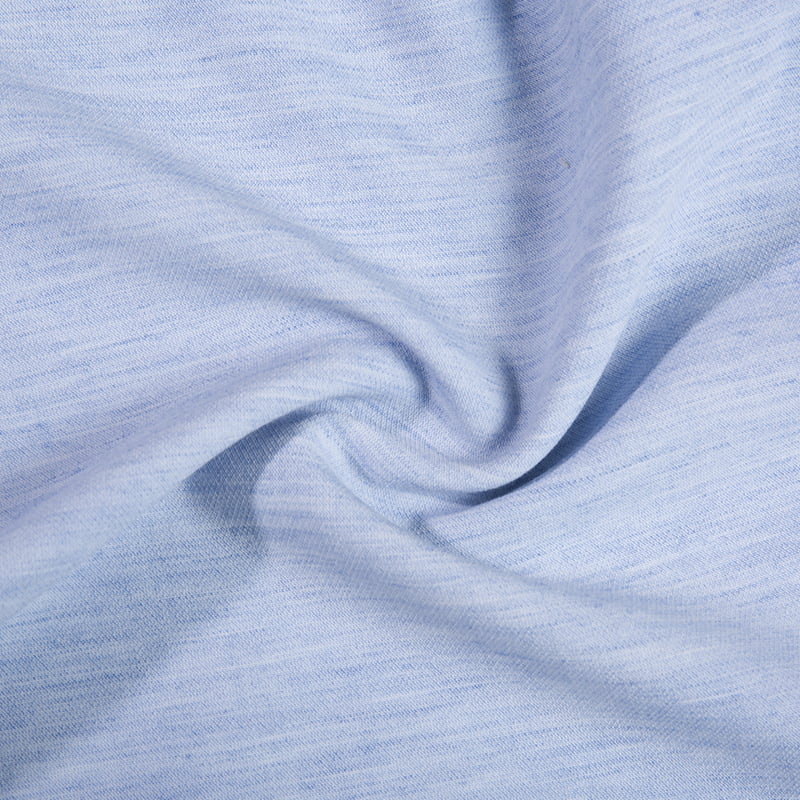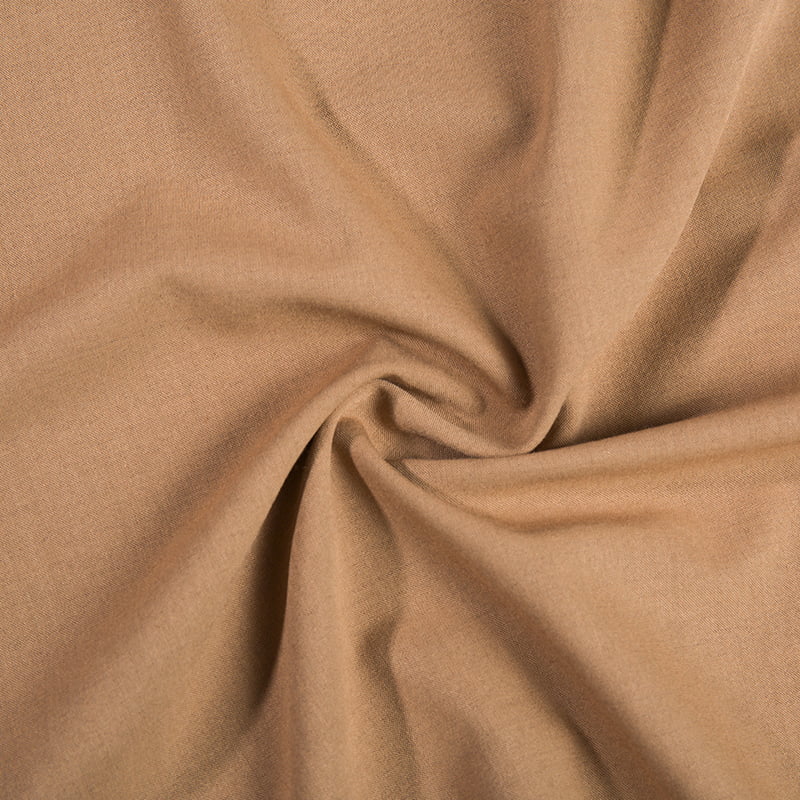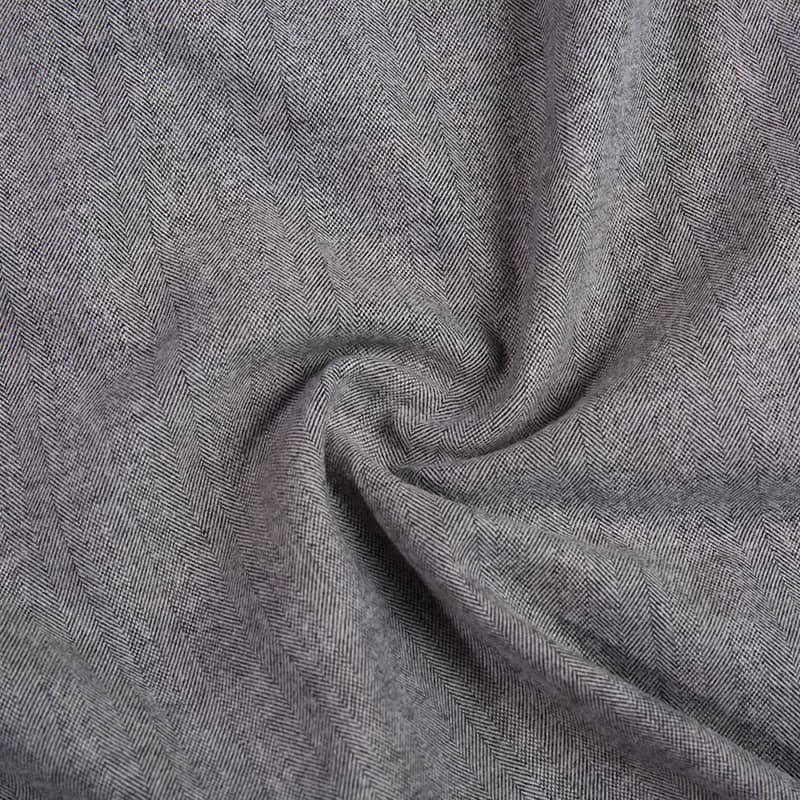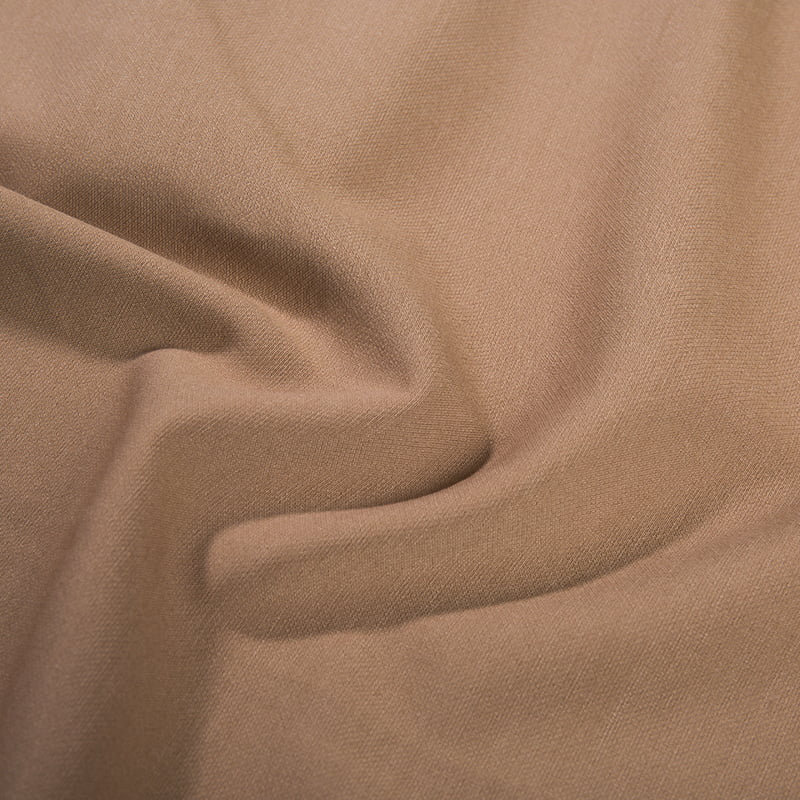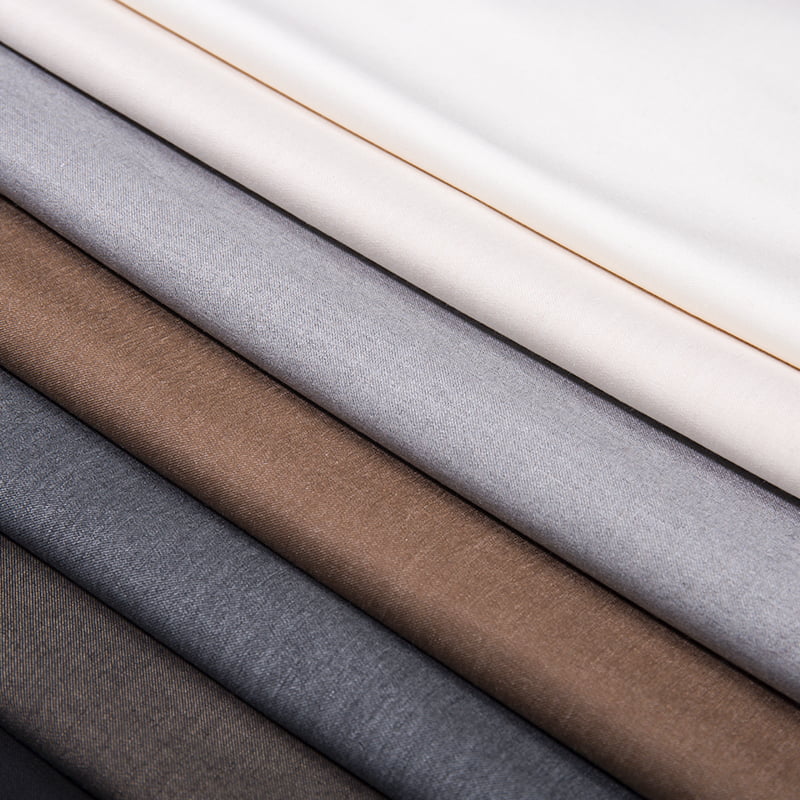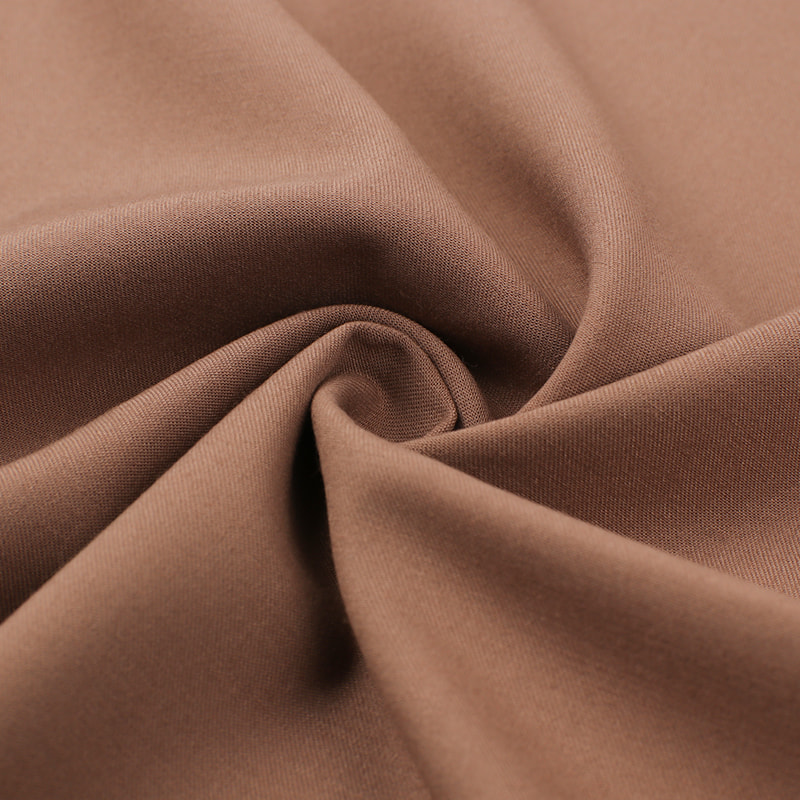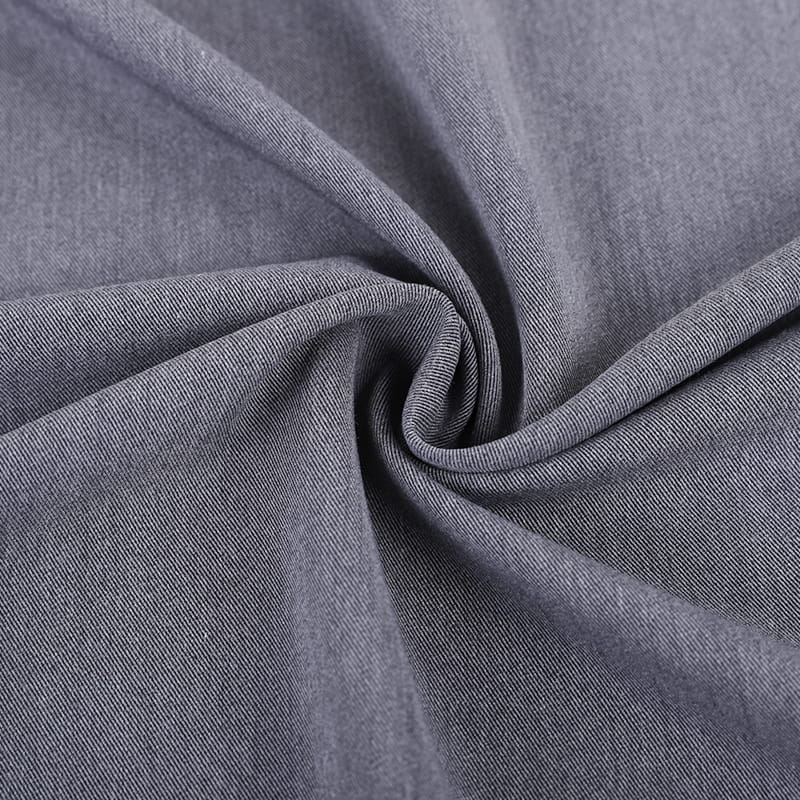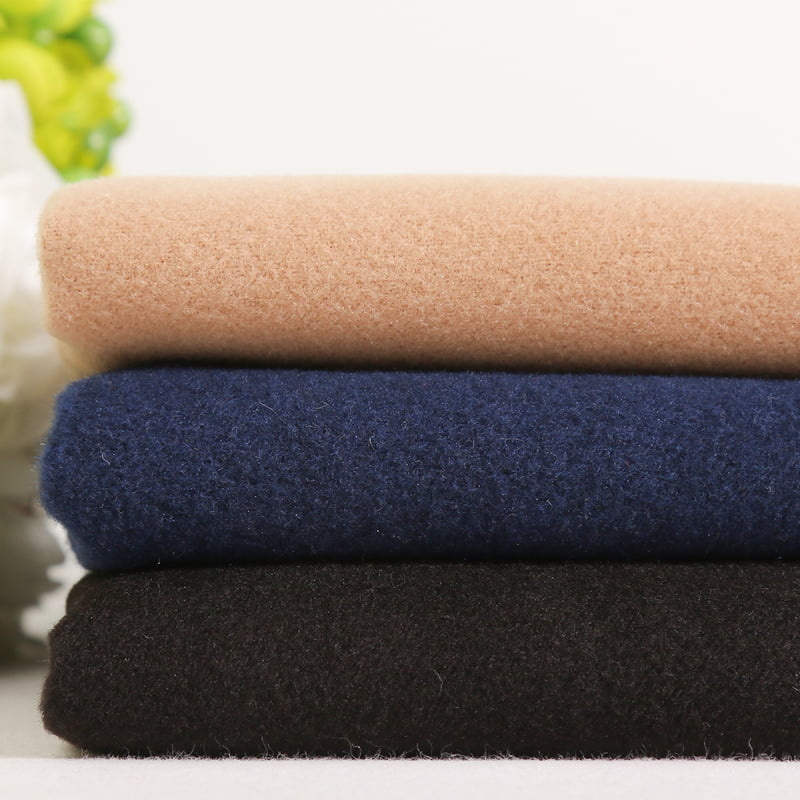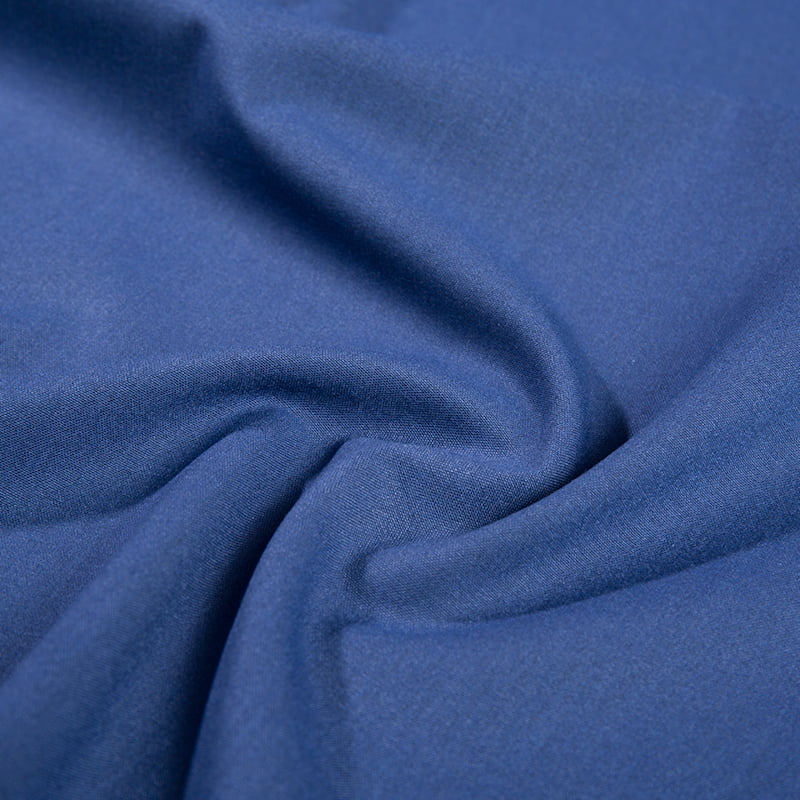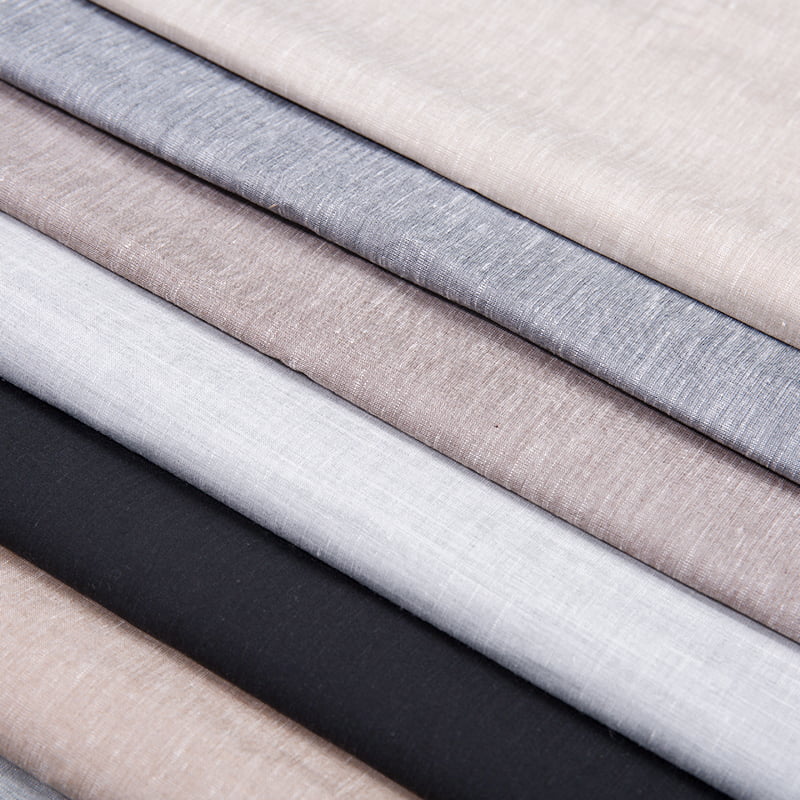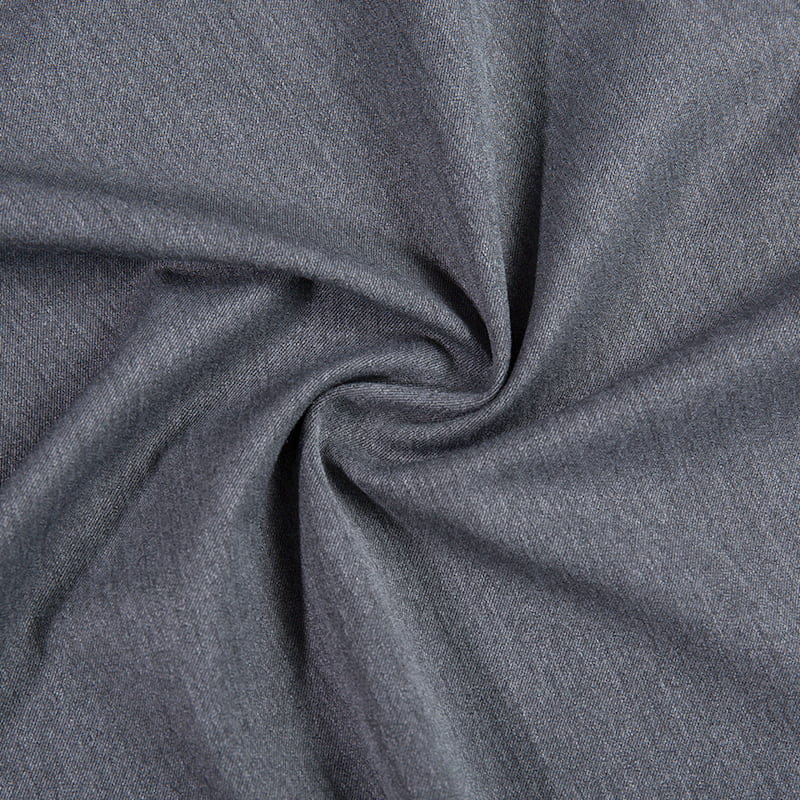Plain Dyed Polyester Rayon 4 Way Stretch Twill Fabric combines the wear resistance and wrinkle resistance of polyester fiber with the softness and moisture absorption of rayon, and gives the fabric good stretch and recovery through four-way elastic technology. The twill weave gives the fabric a unique texture and visual beauty, making it stand out among many fabrics.
As one of the important indicators of fabric performance, breathability is directly related to the comfort and health of the wearer. In hot summer or high-intensity sports occasions, good breathability can quickly discharge sweat and moisture from the body surface, keep the skin dry, reduce bacterial growth, and prevent skin problems. Therefore, for Plain Dyed Polyester Rayon 4 Way Stretch Twill Fabric, optimizing breathability is particularly important.
In order to improve the breathability of the fabric, adjustments can be made to the fiber ratio. Appropriately increase the proportion of rayon, take advantage of its good moisture absorption and breathability, and combine it with the strength and elasticity of polyester fiber to achieve a balance between breathability and functionality.
The influence of weaving process and structure on breathability is crucial. The use of loose weaving structure, such as reducing the warp and weft density, using thicker yarns, or introducing special weaving methods such as mesh and jacquard, can effectively increase the porosity of the fabric and improve breathability.
The finishing process is one of the important means to improve the breathability of fabrics. Through chemical treatment, such as the use of breathable finishing agents, it can penetrate into the fiber, change the fiber surface structure, increase porosity and breathability. At the same time, physical treatments such as heat setting and calendering can also improve the breathability of fabrics to a certain extent.
Adding an appropriate amount of hygroscopic agent or other functional additives during the fabric production process can further improve the breathability and wearing comfort of the fabric. Hygroscopic agents can absorb and quickly discharge sweat from the body surface to keep the skin dry.
In addition to the optimization of the fabric itself, reasonable application and matching are also the key to improving breathability. When designing clothing, consider adding a layer of breathable lining or mesh inside the fabric; when wearing, choose appropriate inner clothing and outerwear according to seasonal and weather changes to reduce sweat accumulation and stuffiness.
How to optimize the breathability of Plain Dyed Polyester Rayon 4 Way Stretch Twill Fabric to meet diverse needs?
-
FX55367 Fashion Women'S Woven Fabric Viscose Wool/Polyester Blend Stretch Suiting Fabric
-
FX54701 Popular Double Weaving Polyester Rayon Stretch Wool Fabric For Suit Uniforms
-
FX54706 Spring/Summer Soft Handfeeling Polyester Viscose Wool Blend 4 Way Stretch Suiting Fabric
-
FX54709 Colorful High Quality Polyester Rayon Stretch Wool Fabric For Ladies'S Pants And Suit
-
FX54869 Herringbone Design Heavy Weight Poly Viscose Wool Cashmere Blend Fabric For Suit
-
FX55874 Soft Handfeeling Plain Dyed Polyester Rayon 4 Way Stretch Wool Suiting Fabric
-
FX55642 Reactive Dyed Wrinkle Resistant Poly Rayon Wool Blend Fabric For Suit And Pants
-
FX55869 Soft Handfeeling Tr 4 Way Stretch Wool/Polyester Fabric For Suit And Trousers
-
FX55885 High Quality Wool Fabric Polyester Rayon With Stretch Fabric Ladies'T Outwear
-
FX54434 Soft Hand Feeling T/R Polyester Rayon Spandex Twill Fabric For Pants Dress Blazers Etc
-
FX50081 Heavy Weight Double Side Brushed Poly Rayon Spandex Fabric For Winter Coat
-
FX55425 Manufacture Tr 4 Way Stretch Top Dyed Fabric For Men'S Suit Trousers
-
FX55884 Fashion Tr Poly Rayon Spandex With Linen Top Dyed Suiting Fabric
-
FX55885 Soft Handfeeling Polyester Rayon Spandex With Modal Top Dyed Suiting Fabric
-
FX55427 Top Dyed Good Color Fastness 2 Way Stretch Tr Suiting Fabric For Men
-
FX55428 High Quality Poly Rayon 2 Way Stretch Top Dyed Tr Suiting Fabric
-
FX55430 Heavy Weight Good Handfeeling Poly Viscose With Stretch Top Dyed Suiting Fabric


 English
English 中文简体
中文简体 日本語
日本語 한국어
한국어 Español
Español русский
русский

